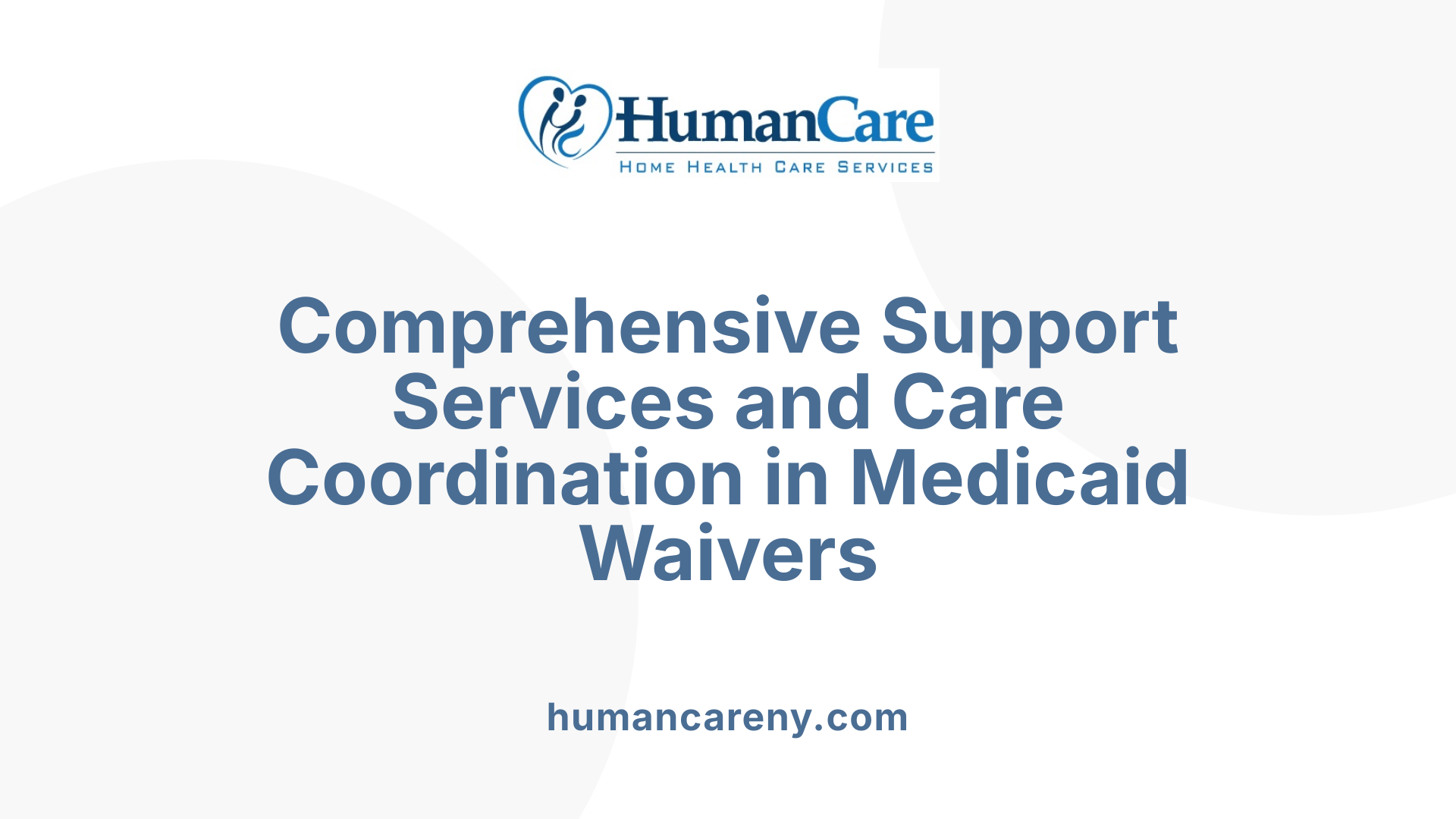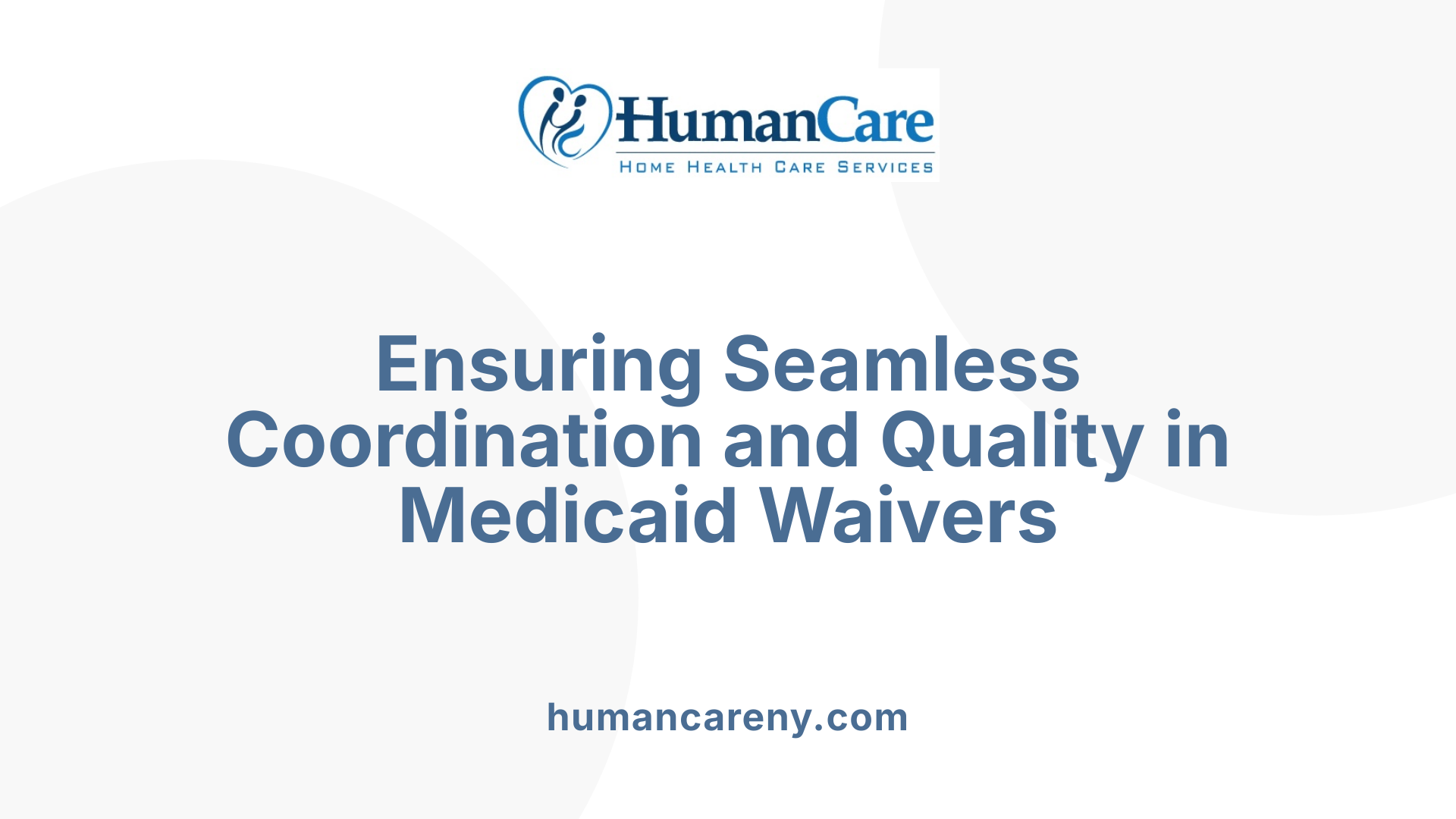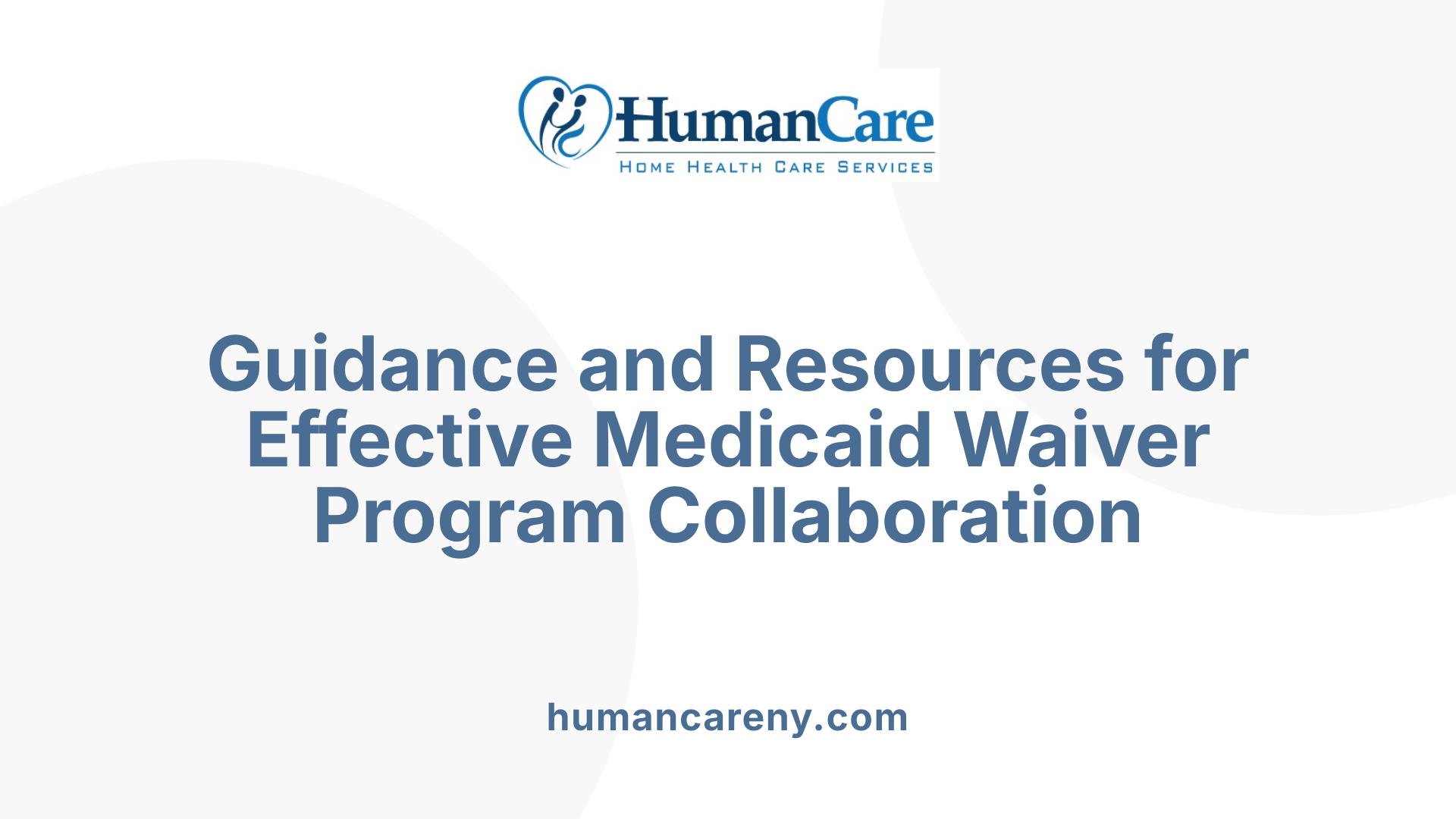Understanding the Framework of Medicaid Waiver Programs and Service Collaboration
Medicaid waiver programs play a crucial role in supporting individuals with disabilities and chronic health conditions by providing community-based services that promote independence and improve quality of life. These programs are designed with flexible structures that enable states to tailor services to meet local needs, ensuring that recipients can receive comprehensive care while remaining outside institutional settings. This article explores the intricate coordination mechanisms among Medicaid waivers and other health and community resources, the eligibility parameters, the spectrum of services offered, and the policy frameworks that underpin effective management and integration.
Structure and Eligibility of Medicaid Waiver Programs

What is the general structure and eligibility criteria for Medicaid waiver programs?
Medicaid waiver programs are designed to expand access to community-based services for individuals with disabilities or chronic health conditions who might otherwise require institutional care. These programs are run at the state level and are authorized under federal Medicaid regulations, specifically Section 1915(c). They allow states to waive certain standard Medicaid rules, enabling more flexible service provision and tailoring supports to individual needs.
Eligibility criteria typically include having a qualifying medical or functional condition, meeting the state's level of care standards—such as needing assistance comparable to nursing home or intermediate care facility (ICF/IID) levels—and demonstrating financial need, often with income limits. Many programs set income eligibility at or below 300% of the Supplemental Security Income (SSI) benefit level, although some waivers serve specific populations regardless of income.
States also establish additional parameters, such as service limits, target populations, and age ranges. Services offered can encompass personal care, home modifications, transportation, behavioral supports, and medical equipment, tailored to support independent living or community integration.
How are medical and functional assessments conducted for eligibility?
To determine whether an individual qualifies for a waiver, states require comprehensive medical and functional assessments. Medical assessments evaluate the applicant’s health status, chronic conditions, and need for medical supports. Functional assessments gauge an individual’s abilities in areas like mobility, communication, self-care, and safety.
For instance, in Indiana, an evaluation for the ICF/IID level of care considers the individual's need for 24-hour assistance stemming from substantial impairments that originate before age 22. Similarly, Georgia's assessments include determining if the individual needs continuous support to remain in the community.
These assessments are often performed by qualified healthcare providers, such as licensed clinicians or case managers, who utilize standardized tools and criteria relevant to the specific waiver. The results inform the development of the person-centered Plan of Care, which outlines necessary services.
What is the application process and what about waiting lists?
Applying for Medicaid waivers involves several steps. Usually, individuals begin by submitting applications through their local agencies, such as Area Agency on Aging or Bureau of Developmental Disabilities Services offices. An initial eligibility screening ensures the applicant meets basic Medicaid and program-specific criteria.
Following eligibility confirmation, applicants undergo detailed medical and functional assessments, which determine their need for waiver services. Upon approval, they are placed on a waitlist if the portfolio of available funds or slots is full.
Waiting lists are common due to limited funding and the high demand for these services. Many states, including Indiana and Georgia, have systematic management of waitlists, which may rank applicants based on urgency or date of application.
Applicants can reapply or appeal denials, and some states periodically review and prioritize waiting lists to expedite services for the most vulnerable individuals.
How do federal guidelines and state-specific criteria influence these programs?
Federal regulations impose core standards for HCBS waivers, including ensuring settings are integrated into the community, providing person-centered planning, and maintaining safeguards for quality and safety. These federal mandates aim to prevent institutional bias and promote independence.
States can tailor their waiver programs within federal parameters. This includes setting specific eligibility criteria, service limits, and target populations, such as focusing on elderly individuals, people with developmental disabilities, or those with traumatic brain injuries.
For example, some states have separate waivers for different age groups or conditions, each with unique eligibility requirements and covered services. All programs must demonstrate cost-effectiveness, compliance with federal guidelines, and uphold participant rights.
In summary, Medicaid waiver programs represent a flexible approach to delivering long-term services, with eligibility hinging on medical necessity, functional status, and financial criteria, all governed by both federal standards and state policies.
Range of Services Offered and Their Coordination

What types of medical and non-medical supports are provided through Medicaid waivers?
Medicaid waivers encompass a broad spectrum of services aimed at helping individuals live more independently and comfortably in their community or homes. These include both medical supports and personal assistance that address daily living needs.
On the medical side, services often include therapies such as physical, occupational, and speech therapy, along with specialized medical equipment, medication management, and health monitoring systems like emergency response services. For non-medical supports, services extend to adult day programs, respite care, home modifications like ramps and bathroom upgrades, transportation services, behavioral supports, and case management.
These comprehensive services are tailored depending on the individual's unique health and personal needs, with the overarching goal of reducing reliance on institutional care and fostering community integration.
What specific services are typically covered under these programs?
| Service Type | Description | Purpose |
|---|---|---|
| Adult Day Services | Structured social and health services during the day | Support social engagement and supervision |
| Home Modifications | Structural changes in the home | Improve safety and accessibility |
| Behavioral Supports | Strategies to manage challenging behaviors | Support mental health and stability |
| Case Management | Care planning and coordination | Ensure individualized service provision |
| Transportation | Travel assistance to medical or community activities | Promote participation and access |
| Medical Equipment | Durable medical devices | Aid mobility and health management |
| Respite Care | Temporary relief for primary caregivers | Reduce caregiver burnout |
| Therapies | Physical, occupational, speech | Improve functional abilities |
These services are planned and delivered in coordination with healthcare providers, social services, and community organizations to meet the specific needs of each individual.
How does the role of case management and personalized care planning influence service delivery?
Case managers serve as the central coordinators for each individual’s care plan. They assess the person’s health, living conditions, and personal preferences to develop a tailored Plan of Care. This plan specifies what services are needed, sets service limits, and identifies appropriate providers.
Care planning involves collaboration between the individual, family members, healthcare professionals, and community services. The case manager continuously monitors the effectiveness of the services, making adjustments as needed to respond to changing needs or circumstances.
This personalized approach ensures that services are relevant, appropriate, and flexible, promoting independence and maximizing quality of life. It also helps prevent unnecessary institutionalization by providing targeted support where it is most needed.
In what ways do these services promote individual independence?
Services under Medicaid waivers are designed not just to support daily living but to empower individuals to achieve greater independence. Home modifications remove physical barriers, enabling individuals to move freely and safely within their homes. Behavioral supports and therapies help manage conditions that might otherwise impair functioning.
Care management ensures that each individual’s specific goals for independence are prioritized, whether it’s maintaining employment, participating in community activities, or managing health conditions. Transportation services increase access to vital services and social activities, reducing isolation.
By offering a range of supports tailored to each person’s needs, Medicaid waivers foster a sense of autonomy, dignity, and active participation in community life. They also provide a supportive safety net that empowers individuals to live as independently as possible while receiving necessary assistance.
Management and Oversight for Effective Service Integration

How are Medicaid waiver programs managed and administered to ensure coordination with other services?
Medicaid waiver programs are primarily managed and overseen by dedicated state agencies that ensure seamless integration with other health and social services. These agencies are responsible for implementing the waivers within federal guidelines, tailoring services to meet the diverse needs of participants while maintaining high standards of quality and safety.
State agencies collaborate closely with healthcare providers, community organizations, and support networks to coordinate comprehensive care. They develop individual Care Plans for each participant, emphasizing person-centered approaches that respect preferences and promote independence. These plans integrate medical, behavioral, and social supports, ensuring a holistic approach to service delivery.
Federal authorities such as the Centers for Medicare & Medicaid Services (CMS) play a pivotal role by establishing the regulatory framework. The use of authorities like Section 1915(c), which authorizes home and community-based services, and Section 1115 demonstrations allows states to modify federal Medicaid rules to better serve their populations. This flexibility helps states waive certain requirements—such as service comparability and income restrictions—providing tailored programs like the Family Supports Waiver or the Community Integration Waiver.
Managed care organizations and healthcare providers are often integrated within these systems to promote coordinated, person-centered care. Many states also pursue managed care models or regionalized oversight to streamline service provision, monitor outcomes, and control costs.
Monitoring and quality assurance mechanisms are vital for maintaining standards. Regular compliance checks, service evaluations, and audits ensure providers meet federal and state regulations. Agencies conduct ongoing assessments of service quality and participant satisfaction, adjusting programs as needed to improve outcomes.
The overarching goal of management and oversight is to foster a system where services are not only accessible and effective but also coordinated across sectors, enabling individuals to live successfully in community settings instead of institutions. This approach promotes health, independence, and well-being through well-regulated, person-centered, and integrated service delivery systems.
Resources and Policy Frameworks Supporting Integration

What resources and policy information are available regarding Medicaid waiver program integration and service collaboration?
To promote effective integration and collaboration across Medicaid-funded services, numerous resources and policy documents are available from both federal and state agencies. These resources aim to guide states, providers, and community organizations in designing, implementing, and refining waiver programs that support individuals in community settings.
At the federal level, several Medicaid authorities, such as the Centers for Medicare & Medicaid Services (CMS), oversee policies surrounding home and community-based services (HCBS). CMS manages multiple Medicaid waivers including the 1915(c), 1915(i), 1915(j), and 1915(k), each offering a flexible framework for states to develop tailored services for specific populations. These waivers emphasize person-centered planning, provider participation standards, and promoting community access.
States build upon these federal frameworks by issuing their own policy manuals, eligibility guides, and detailed descriptions of available waiver programs. For instance, Pennsylvania’s various waivers, like the Consolidated and Autism Waivers, outline comprehensive service options and eligibility criteria designed to meet local needs. These documents often include guidebooks, FAQs, and application procedures.
Policy updates and program amendments play a vital role in adapting services to evolving needs. For example, states regularly submit waiver amendments and Section 1115 waiver applications to CMS, which include proposals for new services, adjustments to existing programs, and strategies to improve integration. Public comment periods are typically held during these processes, allowing stakeholders to provide input and influence policy direction.
In addition to official documents, technical assistance programs are vital resources. These are often operated by state agencies, regional planning bodies, or national organizations dedicated to Medicaid policy development. They offer training, toolkits, data analysis, and best practices for implementing integrated services. These programs help ensure that providers and service coordinators are well-equipped to deliver person-centered, holistic care.
Community organizations and advocacy groups also contribute resources by sharing success stories, innovative practices, and strategies for improving service collaboration. Many states have dedicated websites and portals providing updates, policy briefs, and forums for stakeholder engagement.
In summary, a robust array of policy resources—from federal regulations to state-specific manuals and public comment opportunities—supports the ongoing effort to enhance Medicaid waiver program integration. These tools facilitate continuous improvement, foster interagency cooperation, and ultimately aim to provide individuals with seamless, community-based services tailored to their unique needs.
Fostering Seamless Community Care Through Strategic Coordination
Effective coordination among Medicaid waiver programs and other health and social services is vital to achieving person-centered, community-based care solutions that meet diverse needs. By leveraging federal frameworks, state policies, and best practices in management and oversight, states can ensure seamless service delivery that promotes independence, reduces reliance on institutional care, and enhances the quality of life for individuals with complex health needs. Continued policy development, resource sharing, and stakeholder collaboration are essential components in advancing integrated, accessible, and sustainable community care systems.
References
- Indiana Medicaid: Members: Family Supports Waiver - IN.gov
- Home & Community-Based Services 1915(c) - Medicaid
- Indiana Medicaid: Members: Aged and Disabled Waiver - IN.gov
- Waiver Programs | Georgia Medicaid
- Home and Community Based Waiver
- Indiana's Medicaid Waiver Programs: Home and Community-Based ...
- Home and Community-Based Services Waivers - HCPF
- Florida Medicaid's Covered Services and HCBS Waivers



